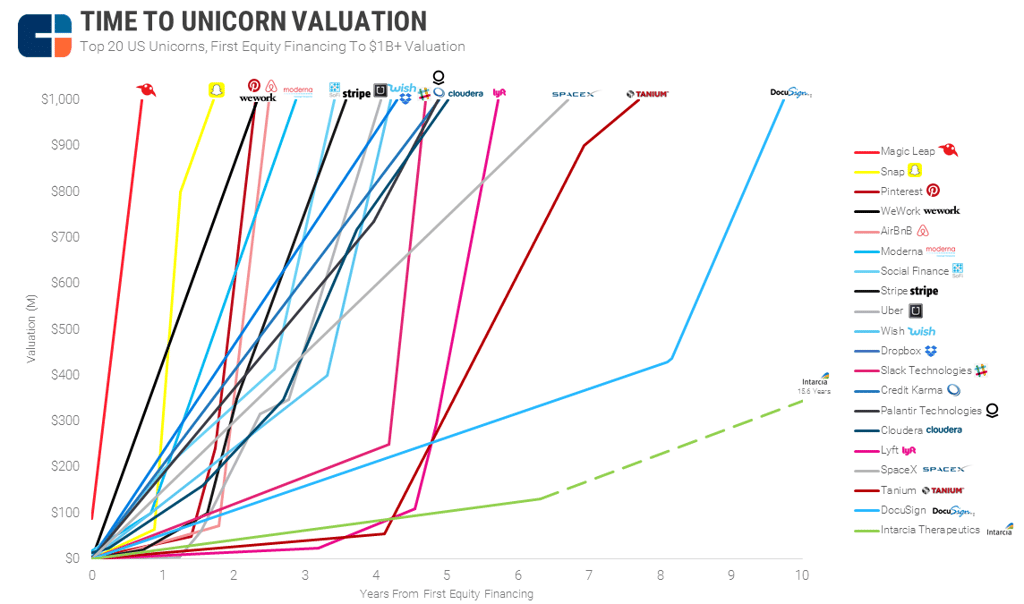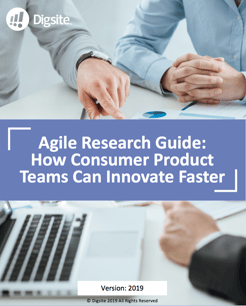In recent years, I’ve seen a ton of startups grow from nothing into unicorns practically overnight. Increasingly, larger organizations are doing everything they can to capture that startup magic—including building teams that are Lean and Agile.
In This Post I'll Explain:
- How Digsite views the difference between "Lean" and "Agile" teams
- Why many organizations are taking a Lean or Agile approach
- How quick, iterative research helps Lean and Agile teams succeed

Over the past decade, a number of high-growth companies have found success by embracing an Agile approach to engineering and product development, opting to operate as Lean organizations, or by building hybrid models that combine components of both Agile and Lean. As a result, these organizations are much more efficient and they’re better positioned to respond quickly to new challenges.
There is no denying the hyper-growth that is possible when nimble companies are able to quickly find their ideal position in the marketplace:

Source: CB Insights Full Article Here
As far as "Agile" is concerned it’s a philosophy that encourages developers to become nimble and collaborative—with both customers and colleagues—in order to be able to quickly iterate products that their audiences demand.
The underlying ideas of the philosophy first appeared in the Agile Manifesto, which was published in 2001 as a response to the clunky and outdated software development methodologies that were widely followed at the time. At its core, Agile focuses on pleasing customers by delivering software updates frequently. They do this using "sprints", which are essentially two-to-four week periods where teams focus on quickly building a small defined set of new features. This approach enables teams to rapidly iterate with their customers, as they experience and use new features. Today, many of the world’s most popular tech companies live and breathe Agile.
In recent years, Agile has moved beyond just software development. Many companies across all industries have applied Agile to their product development process, too. The approach allows them to get more customer feedback, more often during product development.
While “Agile” and “Lean” have some similarities, they are not the same thing. Agile focuses on increasing speed and collaboration, and Lean focuses on maximizing customer value while reducing costs and eliminating inefficiencies.
In 2011, Eric Reis published The Lean Startup, creating a blueprint that new companies could follow to increase their chances of success in the face of uncertainty.
The Lean Startup sets out to accomplish objectives that are complementary to Agile:
- Eliminate uncertainty. Test your vision continuously to see where you're going wrong.
- Work smarter, not harder. Start with asking whether a product should be built instead of whether is can be built. Once it's determined to be viable, management can enlist early adopters so the product already has users when it ultimately hits the market.
- Develop an MVP. Use the build-measure-learn feedback loop. Build a minimum viable product (MVP), test to see what works and what doesn't, and pivot accordingly.
- Validated learning. The ultimate goal of any startup is learning how to build a sustainable business. Test each element of the business to see whether you're on the right track. Know that you're focusing on the right thing.
Over the last several years, companies—including Agile ones—have increasingly embraced the Lean Startup approach, realizing they can improve quality while remaining fast and efficient. Specifically, Agile teams are using on-demand consumer insights to improve their story writing, better define outcomes (MVP), and iterate solutions within their sprint cycles. By tying Agile and Lean together, these new businesses can expect better results.

For some teams at larger organizations, the terms Lean and Agile can have negative connotations. During the Great Recession, marketing teams were cut and marketers were asked to take on roles they never had to do before. And while budgets have recovered over the last 5 years, teams are being pushed to stay lean (e.g., less staff) and be more agile (e.g., be more responsive and flexible)
The result is, each member of the marketing team is expected to know how to do almost everything. For example, marketers often don't have access to analysts or market researchers; they are expected to gather and analyze data themselves. While this creates agility as each person can do more, it may be why so many workers feel overwhelmed.
The good news is that the Lean movement proves that we actually can do more with less—by minimizing rework and unproductive activities and aligning the team in the same direction based on actionable data.
The trick to making Lean and Agile work is finding out which tools are available that can provide engineers and marketers alike with the data they need to determine where and how they need to invest their energies. Trim all the fat from workflows and use pertinent data to make highly informed decisions, and all of a sudden the mountain of job responsibilities and fast-paced iterations start to seem quite manageable.

Pulled in a million different directions every day, employees of Lean and Agile teams can use all the help they can get. Any platform or solution that automates or accelerates job functions is a great place to start.
Because members of these teams aren’t experts in everything (even though they’re expected to be), it is critical for organizations to look for intuitive solutions and products that deliver an enjoyable user experience (UX) or customer experience (CX). After all, platforms should be designed to help people—not make them feel dumb for having a hard time figuring out how to use them.
Today, getting “most of the way there faster” is what most organizations are shooting for. Successful companies are able to get out better concepts to their users—and faster. To do that, their teams need to understand the context around why their users react in certain ways or why they’re asking for certain functions or products. With proper insights into your customers and their behaviors, it becomes that much easier to iterate quickly and build a minimum viable product that users want. It’s how you work smarter without having to work harder.
Quick, iterative research enables teams to identify what their customers want right away.
Imagine you’re heading down the wrong path while developing or promoting a new product but are able to find out exactly what you’re doing incorrectly early on in the process. Instead of continuing down that path and wasting time and resources, you’re able to use data to find out the direction your customers want you to go. This saves you a ton of work while ensuring the product or promotion you ultimately release will be well-received by your users.
Most customers can’t tell you what they want. But when you show them something, they all can react to it. Capture those reactions and use them to guide your efforts moving forward. Repeat the process continuously. That’s how you become more effective and more successful.
With the right tools at their disposal, Lean and Agile teams can bring better products to market faster—and regularly.
Build a Lean or Agile team that leverages real-time data and insights and you’ll be able to quickly respond to shifting customer demands and deliver the products they want that much sooner—and you’ll spend less money doing it.
As an added bonus, employee engagement will increase as workers invest their time more efficiently while getting better results. That’s the recipe for more satisfied customers, a stronger company culture, and a healthier bottom line.
Ready to learn more or get started? Download our free ebook, Agile Research Guide: How Consumer Product Teams Can Innovate Faster.





